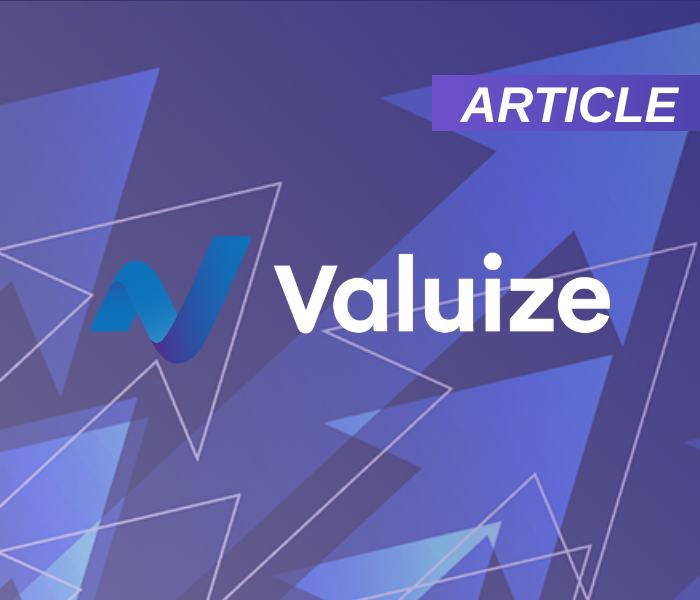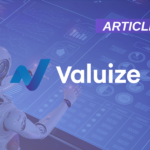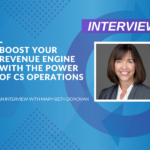Customer success processes in B2B software businesses today are often inefficient, siloed and lacking scalability. It’s also typically hard to measure their impact.
How were your company’s customer success processes created?
Perhaps it was a carefully thought out initiative. Perhaps it was fueled by all of the strategic expertise, funding and time required to develop a category-leading customer success strategy—one that transforms your company’s revenue retention and expansion metrics.
Or perhaps not.
The state of customer success processes
Less than 30% of enterprise level companies ($500M+ annual revenue) are funding and creating robust Customer Success organizations, according to Deloitte’s 2019 Enterprise Customer Success (CS) Study and Outlook. And according to the Technology Services Industry Association (TSIA), only 26% of Customer Success organizations have aligned their customer success processes to their customer journeys.
Customer success processes were created as a knee jerk reaction in the majority of enterprise companies. In some cases, the reaction was to the compelling market hype around customer success. In other cases, the reaction was to the realization that customer retention and expansion requires more than a successful sale and a quick launch.
This leads us to the reality of customer success processes in many companies today. Unfortunately, these are often a collection of steps branded as ‘playbooks’ that lack integration with other key processes in sales and marketing. These customer success processes are often inefficient, haven’t been scaled to engage the full customer base and are hard to measure.
Today, many businesses are investing in customer success technology in the hope that ‘plugging it in’ will solve the challenges that come with their current reality.
That’s a false hope.
Customer success technology will simply inherit the silos, inefficiency and ineffectiveness baked into your current customer success processes. Fix your processes and THEN huge value can be realized from customer success technology.
So what’s the fix? At Valuize we believe the answer is lean customer success.
The evolution towards lean customer success
Lean customer success is a continuous improvement methodology focused on engineering customer success processes to maximize their impact, efficiency and scale. We measure impact through increases in customer adoption, retention and expansion. We measure efficiency through reductions in cost and time. And we measure scale by numbers of customers and/or products covered.
You can find the origins of the lean operating philosophy in concepts like standardization and best practices described by Frederick Winslow Taylor in The Principles of Scientific Management (1911), and error proofing by Shigeo Shingo in the 1960s, also colloquially known as “Fool Proof”.
Lean is now a global movement, after first taking hold in the manufacturing domain thanks to the Toyota Production System in post-WWII Japan. Eventually, the movement made its way to the tech industry with 2001’s agile software development framework heavily inspired by lean principles and books like The Lean Startup published in 2011 by Eric Reis.
Applying lean to the design of customer success processes is an evolution that has precedent. Lean has been used in Customer Service for almost two decades, as observed in 2003’s Harvard Business Review article “The Lean Service Machine” by Cynthia Karen Swank.
Implementing lean customer success
Your customer success strategy is fundamentally a collection of primary customer-facing processes intended for creating customer value and secondary processes that support them, like internal workflows.
Lean customer success provides a methodology to engineer these primary and secondary processes to be integrated end to end. It also ensures that the processes all create measurable value for customers through the achievement of value-based outcomes.
Value-based outcomes are prescriptive outcomes that serve as key adoption milestones representing the achievement of recurring measurable value by the customer. The foundation of lean customer success lies in defining these outcomes.
With your value-based outcomes defined, value stream mapping can begin. Value stream mapping is a lean-management method that is used in lean customer success to analyze current-state and design future-state customer success processes. The objective is to identify and visualize all the activities or steps that are required to deliver each value-based outcome.
You can use the Gemba Walk technique to give your team an opportunity to “walk” your current customer success process flows, understand the current value streams and identify improvement opportunities. The goal is to identify all the activities in your customer success processes and classify each activity into one of the following categories:
- Value-added activities: activities that the customer directly receives value from, moving them toward achieving the target value-based outcome. These could often be activities that the customer is paying for. A good example is a training session as part of your onboarding process.
- Business value activities: activities that enable you to deliver value-adds to the customer. An example of this could be collecting and analyzing usage data that can be used to trigger the delivery of the right enablement content to the right users at the right time.
- Non-value-added activities: activities that do not deliver or enable delivery of value to the customer. These activities simply add to your costs and time, creating waste.
Once you’ve finished analyzing the current state of your processes, it’s time to create a future state set of processes that:
- Create/optimize and standardize value-added activities
- Reduce Business value activities to only those truly needed
- Eliminate all non-value-added activities i.e. waste
You must eliminate five types of waste within your customer success processes:
- Wait or delays: For example, holding a call with a customer for too long or delaying the delivery of bad news.
- Overprocessing: All additional steps or activities being performed by your customer-facing teams that are not adding value to the customer and/or that can be automated with technology. Preparing and gathering data for a QBR is a good example, especially if you have multiple data sources.
- Movement: Any unnecessary motion being performed by customer success managers to execute their daily tasks. While this could be physical movement in the office space, more commonly it’s virtual movement like having to switch through multiple software applications and screens to review a customer’s health.
- Defects, errors, bugs: The unexpected and undesired results from a mistake in the design of your customer-facing and/or internal customer success processes. For example, sending an email to the wrong customer and creating a communication issue.
- Customer load: Either the wrong customers or excess customers being put through a process that can result in customers who are incorrectly engaged, or worse, never engaged.
You’ll need participation from subject matter experts, change sponsors and most importantly, a customer or someone acting as a customer to design your future state customer success processes. Choosing the participating members wisely is key for a successful redesign. You’ll need members who are engaged and have an interest in improving the process. Full buy-in from your executive leadership is also a must.
With new future-state customer success processes designed, you’ll need to close the gaps between your current state and target future state. Many tools can assist you with this, but a simple action item list will do the job.
List all of the actions needed to close any gaps and recognize that some tasks will be quick and easy actions that will require almost no resources, whereas others will be more resource intensive and could be small projects for the owner of the action. Name those responsible for each action and assign completion dates. Follow up is key for the success of any process change management. We recommend meetings with a weekly cadence.
Continuous improvement
Measure, measure, measure! You must bake the ability to measure improvement into the design of your new customer success processes. Quantifiable leading indicators in your processes must demonstrate whether the intended value is being delivered to your customers with the efficiency and scale you desire.
Should all indicators and results be a resounding success, be prepared to continuously iterate your customer success processes anyway. First, there is always room for improvement. Second, your business and target market is constantly evolving, so your customer success processes need to evolve, too.
Updates to your products, changes in your market focus and global pandemics are just a few of the items on the endless list of catalysts for change in your customer success processes. Apply lean customer success practices to drive continuous improvement.






